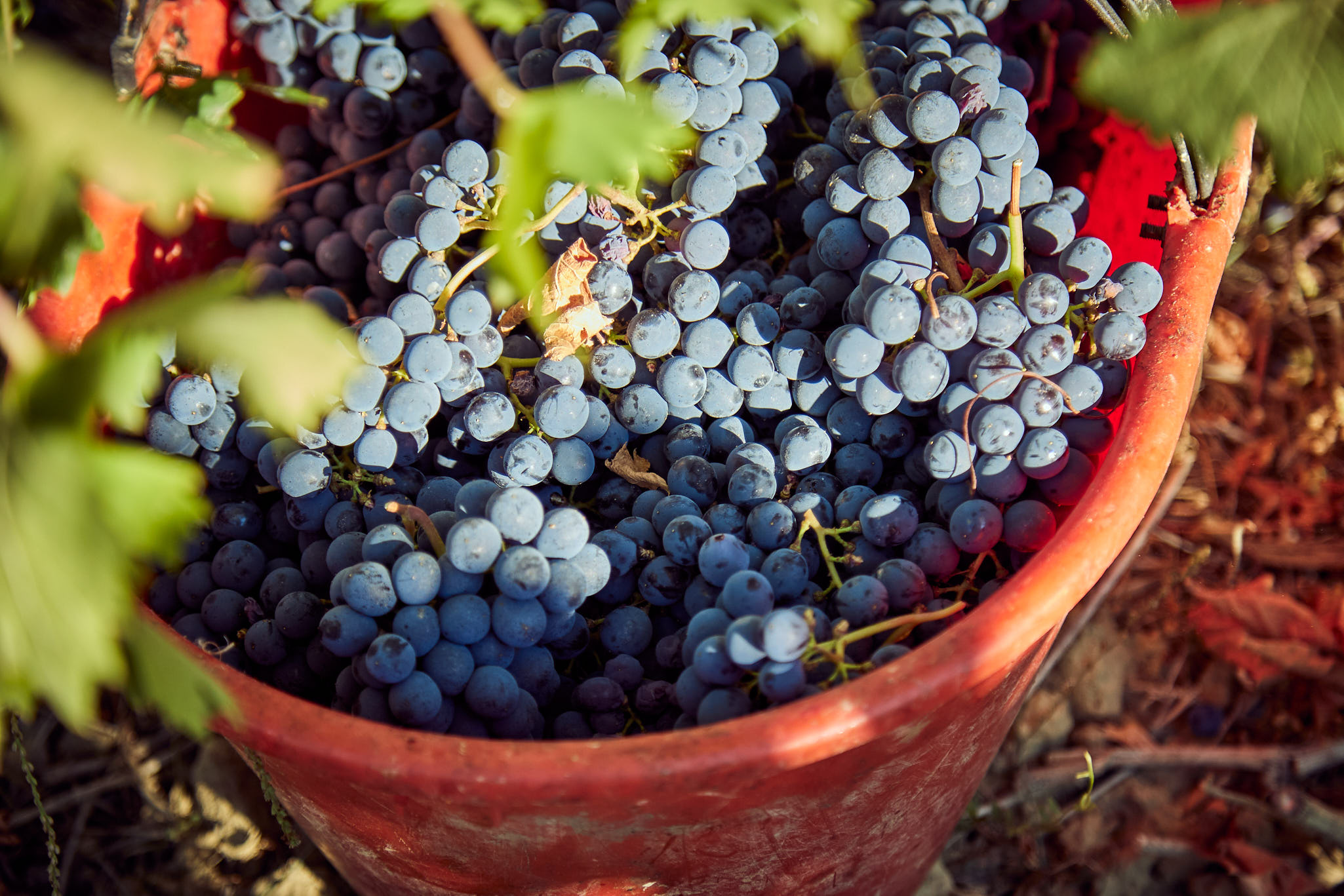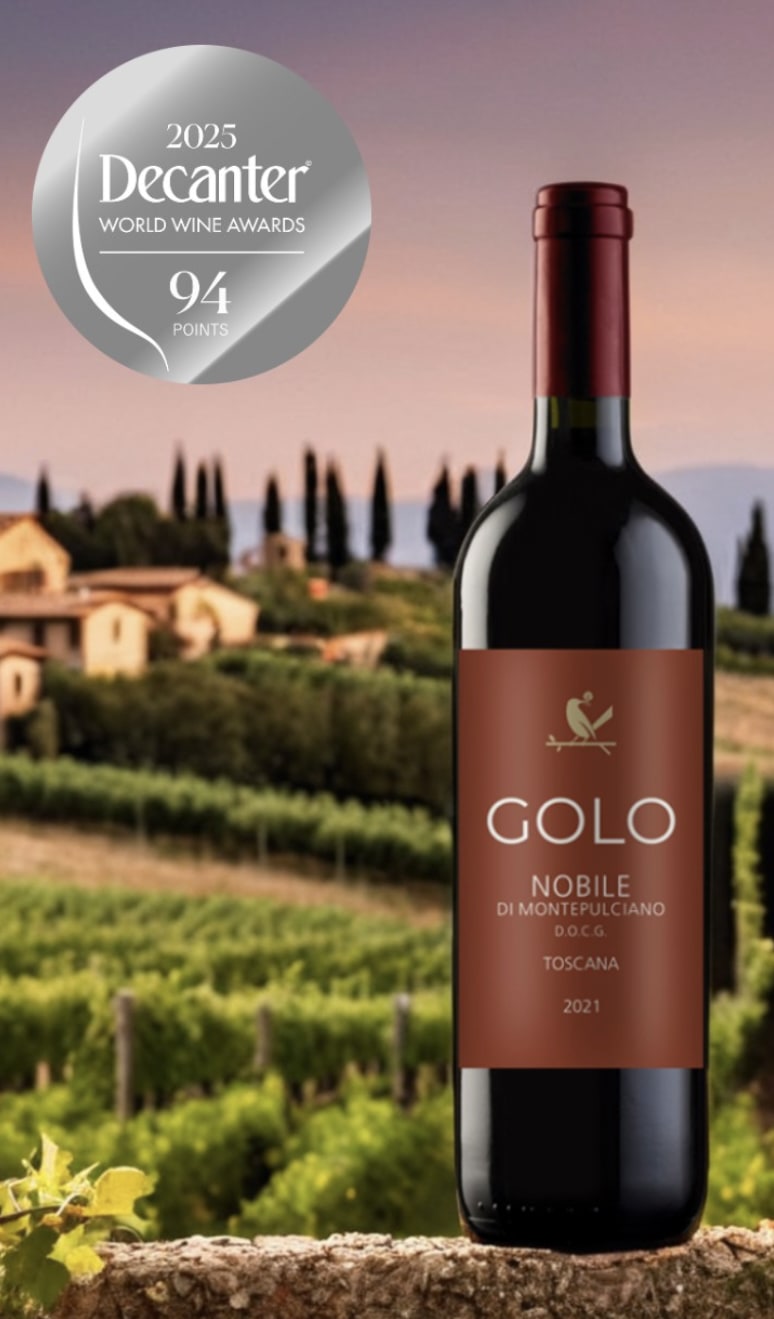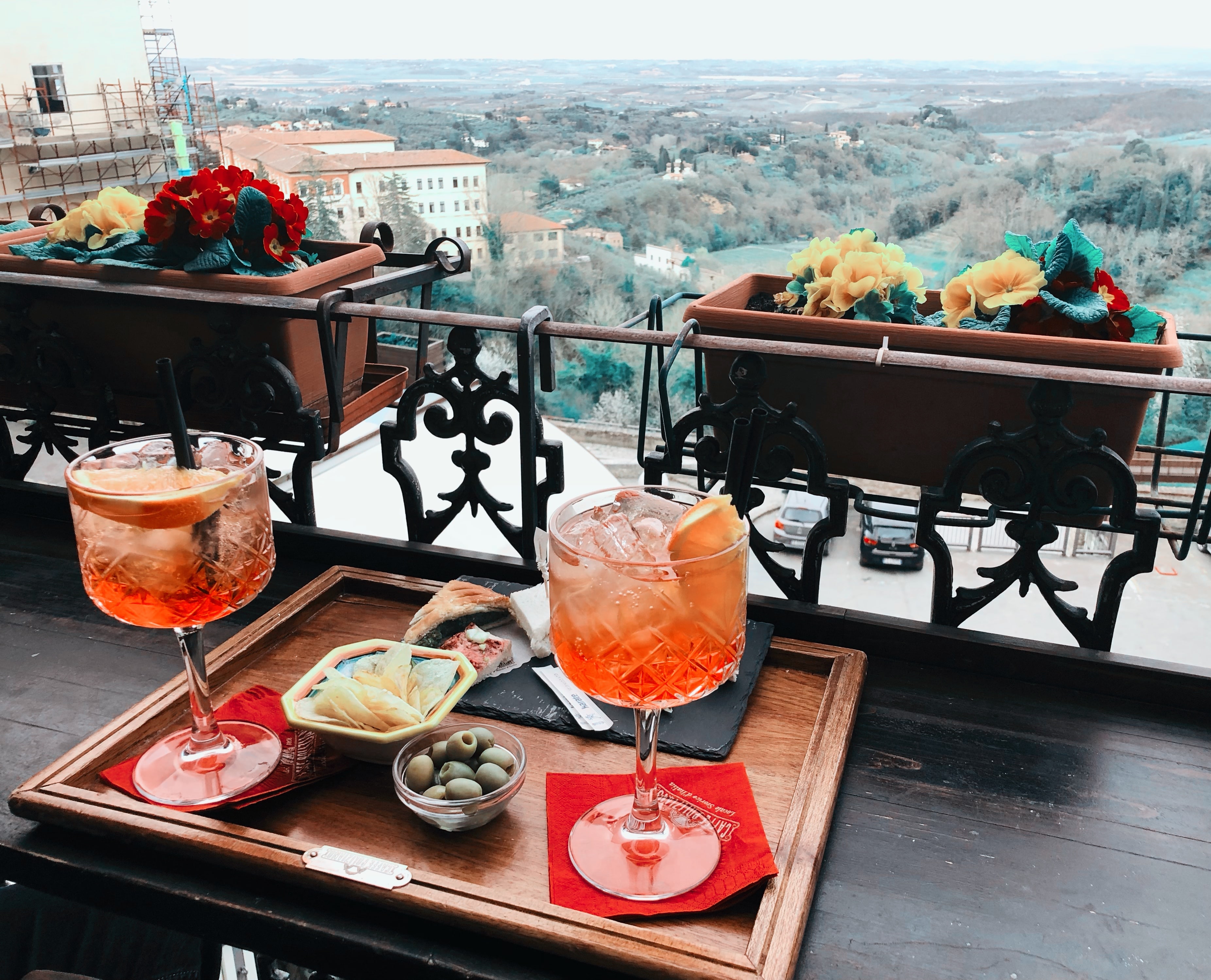Ultimate Guide to Tuscany Wine Region Italy 2025
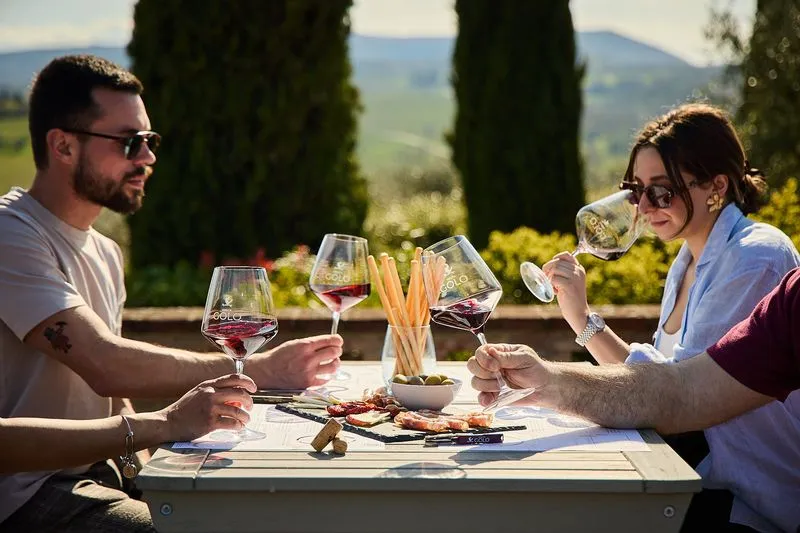
Imagine yourself in the heart of the tuscany wine region italy, where gentle hills roll beneath endless vineyards and ancient villages invite you to slow down and savor each moment.
This ultimate guide is designed to help you experience the best of the tuscany wine region italy in 2025, whether you are a first-time visitor or a seasoned wine lover.
You will uncover the rich history behind Tuscan wines, explore distinct sub-regions and grape varietals, and learn essential travel tips for planning an unforgettable wine journey.
Let the allure of tuscany wine region italy inspire your next adventure as you discover expert recommendations, immersive tastings, and a roadmap to create your perfect trip.
The Legacy of Tuscan Wine: History and Terroir
Tuscany’s rich winemaking heritage is the backbone of the tuscany wine region italy. Ancient landscapes, historic estates, and a unique climate have shaped the wines that are now celebrated worldwide. To understand Tuscany’s allure, we must explore its deep-rooted traditions and the land itself.
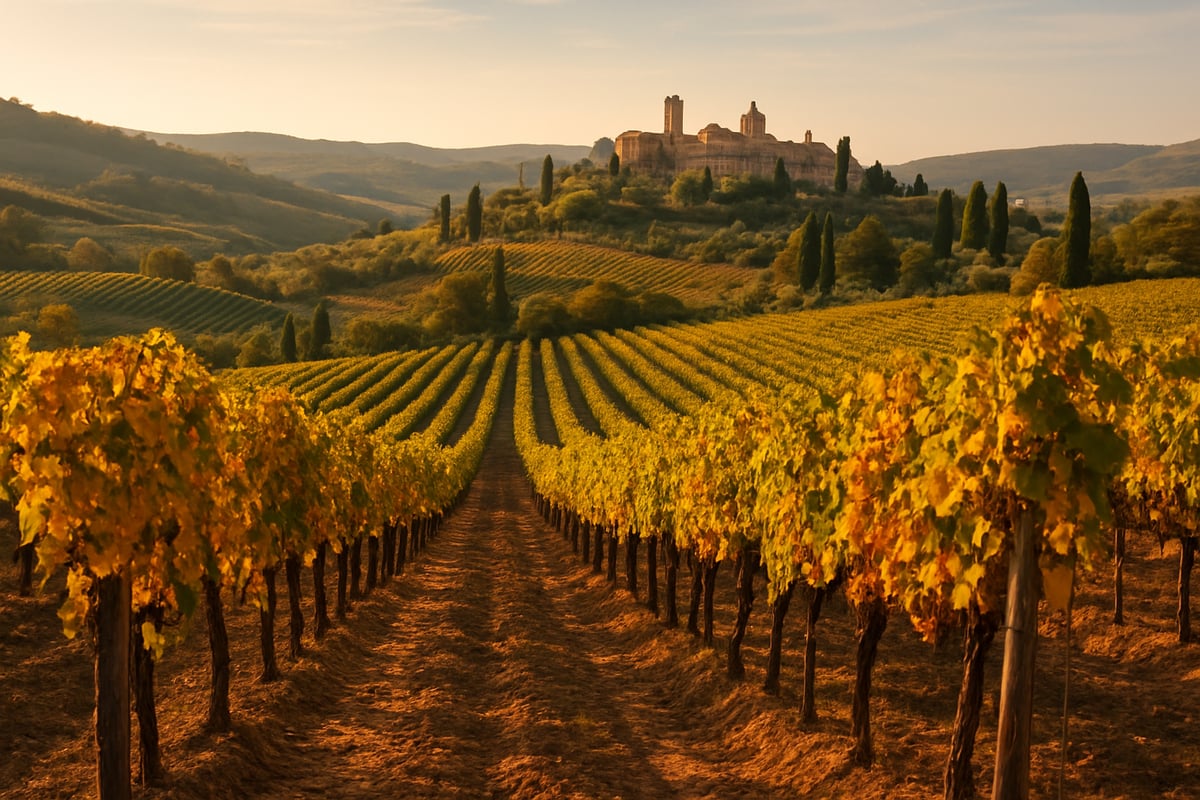
The Origins of Winemaking in Tuscany
Winemaking in the tuscany wine region italy dates back to the Etruscans, who cultivated vines as early as the 8th century BCE. Archaeological sites reveal ancient fermentation vessels and vineyard remnants, highlighting the region’s early expertise.
The Middle Ages saw monastic orders and noble families establish sprawling estates, laying the groundwork for modern viticulture. During the Renaissance, art and wine flourished side by side, as estates like Antinori and Frescobaldi gained prestige. Today, the DOC and DOCG systems protect Tuscany’s wine legacy and ensure quality for future generations. For a deeper look at this history, see Wine in Tuscany: History and Culture.
Unique Terroir and Climate
What sets the tuscany wine region italy apart is its diverse terroir. Warm Mediterranean days and cool nights, influenced by the Apennine mountains, create ideal conditions for grape ripening.
Soils vary across the region, from galestro (rocky clay) in Chianti to sandy coastal plains in Bolgheri. Each sub-region, such as Montalcino or Montepulciano, boasts distinct microclimates, resulting in unique wine profiles. This blend of factors is key to Tuscany’s signature flavors.
Soil Types and Their Impact:
| Soil Type | Main Area | Wine Impact |
|---|---|---|
| Galestro | Chianti | Structure, minerality |
| Clay | Montalcino | Power, richness |
| Sand | Bolgheri | Elegance, aromatics |
Signature Tuscan Grapes and Styles
The tuscany wine region italy is defined by Sangiovese, the dominant grape behind Chianti, Brunello di Montalcino, and Vino Nobile di Montepulciano. Sangiovese offers bright cherry, floral, and earthy notes.
Other native grapes include Vernaccia, Canaiolo, and Trebbiano, providing diversity in style. In the 20th century, the Super Tuscan movement emerged, blending Sangiovese with international varietals like Cabernet Sauvignon and Merlot, challenging norms and gaining global acclaim.
Tuscany’s Place in the Global Wine Scene
Tuscany wine region italy has earned international recognition with countless awards and a strong export market. Its vineyard landscapes are UNESCO World Heritage sites, drawing millions of visitors annually.
Wine tourism is booming, with over 20,000 producers and nearly 60,000 hectares under vine. Tuscany’s wines are now benchmarks for quality and authenticity, influencing trends worldwide.
Key Insights
Centuries-old traditions coexist with modern innovation in the tuscany wine region italy. Terroir-driven wines reflect the landscape’s diversity and the passion of its people.
Historic wineries like Antinori and Frescobaldi have set global standards, while boutique producers continue to push boundaries. The legacy of tuscany wine region italy is a dynamic blend of heritage, creativity, and a relentless pursuit of excellence.
Exploring Tuscany’s Wine Regions: Map and Must-Visit Areas
Imagine uncovering the beauty of the tuscany wine region italy, where each hill reveals a new landscape and every village offers a unique wine story. This region boasts an incredible diversity, from rolling vineyards to picturesque medieval towns. For a comprehensive breakdown of these sub-regions and their distinct characteristics, consult this Tuscany wine region overview.

Chianti and Chianti Classico
At the heart of the tuscany wine region italy lies Chianti, the most recognizable name in Italian wine. Chianti Classico, marked by its black rooster emblem, represents the historic core. The landscape is dotted with charming villages such as Greve, Radda, and Castellina, each offering unique expressions of Sangiovese.
Chianti wines are known for their bright cherry notes, lively acidity, and food-friendly style. Pair them with local dishes like bistecca alla fiorentina or wild boar ragù. Exploring Chianti’s subzones lets you appreciate how terroir shapes each bottle’s personality.
Brunello di Montalcino
South of Siena, Montalcino is a hilltop town that anchors one of the most prestigious DOCG wines in the tuscany wine region italy. Brunello di Montalcino is crafted solely from Sangiovese Grosso and must age for at least five years before release.
The wines are rich, complex, and built to age, with flavors of dark cherry, leather, and spice. Notable wineries like Biondi-Santi and Casanova di Neri consistently earn international acclaim. The annual production is limited, making each bottle a coveted experience for collectors and enthusiasts.
Vino Nobile di Montepulciano
Montepulciano, a Renaissance jewel, is home to Vino Nobile di Montepulciano, another DOCG pillar of the tuscany wine region italy. The Prugnolo Gentile grape, a clone of Sangiovese, gives these wines their signature elegance and savory depth.
Vino Nobile offers aromas of plum, violet, and earthy undertones, making it a perfect partner for Tuscan pecorino cheese and handmade pici pasta. Visitors enjoy guided vineyard walks, cellar tastings, and panoramic views from Montepulciano’s ancient ramparts.
Bolgheri and the Coast
The coastal stretch of the tuscany wine region italy is defined by Bolgheri, where international varietals thrive. This area sparked the Super Tuscan revolution, with icons like Sassicaia and Ornellaia blending Cabernet and Merlot with native grapes.
The maritime climate brings freshness and structure to these powerful reds. The Bolgheri wine route is a scenic journey, lined with cypress trees and boutique estates. Tastings often feature both robust reds and crisp Vermentino whites, showcasing the region’s versatility.
Other Noteworthy Areas
Beyond the headline regions, the tuscany wine region italy features smaller gems. Carmignano, near Florence, blends Sangiovese with Cabernet for a historic yet modern profile. Morellino di Scansano from the Maremma is a rising star, offering juicy, approachable reds.
Vernaccia di San Gimignano stands out as Tuscany’s premier white, crisp and mineral-driven. Each area brings its own festivals, traditions, and local specialties, inviting travelers to explore off the beaten path and discover hidden treasures.
Iconic Wine Towns and Villages
Tuscany’s charm is inseparable from its towns. Siena enchants with its Gothic architecture and vibrant piazzas, while San Gimignano’s medieval towers rise above the vineyards. Pienza is renowned for pecorino cheese and Renaissance design.
Volterra offers Etruscan history and alabaster workshops, and Lucca’s tree-lined walls invite leisurely strolls. Each town in the tuscany wine region italy hosts unique wine festivals, blending cultural heritage with world-class hospitality and local flavors.
Navigating the Tuscany Wine Map
Traveling between wine regions in the tuscany wine region italy is part of the adventure. Distances are manageable: Florence to Siena takes about an hour by car, with Chianti villages along the route. Montalcino and Montepulciano are close enough to combine in a single trip.
To maximize your experience, plan multi-region tours, sample diverse wines, and allow time for spontaneous discoveries. Suggested itineraries range from quick three-day escapes to immersive week-long journeys, ensuring every traveler finds their ideal Tuscan adventure.
Top Tuscan Wineries and Wine Experiences
Exploring the best of the tuscany wine region italy is a journey into tradition, innovation, and sensory delight. Whether you are drawn to centuries-old estates or hidden boutique gems, each winery offers a unique window into the region’s rich wine culture. From immersive tastings to luxurious overnight stays, discover how to curate unforgettable wine experiences in Tuscany.
Visiting Historic Estates and Boutique Producers
The tuscany wine region italy is home to an impressive range of wineries, from grand historical estates to family-run boutique producers. When choosing which to visit, consider factors such as DOCG status, longstanding heritage, and guest reviews. Renowned names like Antinori, Frescobaldi, and Castello di Ama stand out for their architectural beauty and winemaking legacy.
Boutique wineries, often managed by local families, offer a more intimate atmosphere. Many focus on organic or sustainable practices, producing small-batch wines that express the unique terroir of their land. Visiting both types of producers allows for a well-rounded perspective on Tuscany’s diverse wine scene.
Immersive Wine Tastings and Tours
In the tuscany wine region italy, wine tasting is about more than sipping a glass. Many estates offer guided tastings that walk you through their cellars, vineyards, and winemaking processes. Guests can often enjoy pairings with regional specialties like pecorino cheese, salumi, and local olive oil.
Educational workshops are common, including blending sessions, grape identification, and even Tuscan cooking classes. These hands-on experiences deepen your appreciation for the craft and history behind every bottle, making each tasting memorable and enriching.
Unique Wine Experiences
Beyond traditional visits, the tuscany wine region italy entices travelers with creative and immersive experiences. Participate in harvest festivals where you can join grape picking or even try grape stomping, a favorite for both adults and families.
Some wineries offer sommelier-led tastings, wine blending sessions, or even invite guests to stay overnight in vineyard villas and wine resorts. These unique activities provide a direct connection to the land and people, transforming your trip into a truly immersive adventure.
Tenuta Golo: Boutique Wine Tastings in Montepulciano
Tenuta Golo is a standout in the tuscany wine region italy, blending history, scenery, and hospitality. Located in a 17th-century estate, the property features a scenic vineyard amphitheatre that sets the stage for unforgettable tastings. Guests can sample signature wines like Nobile di Montepulciano DOCG, Rosso di Montepulciano, Super Tuscan blends, and the elegant Lily Rosato.

Personalized tours through the vineyards and cellars showcase the estate’s small-batch, estate-grown philosophy. Food pairings with local specialties and the option to stay in a historic villa round out the immersive experience, perfect for both wine enthusiasts and newcomers.
Booking and Planning Tips
Planning winery visits in the tuscany wine region italy requires a bit of research and preparation. Most estates recommend booking tastings in advance, especially during peak seasons. Group sizes can vary, with many wineries offering private or small-group options. Experiences typically include tastings, tours, and sometimes food pairings for a set fee.
Accessibility and family-friendly options are increasingly common. For detailed advice on organizing your visit, consider reading Tuscan Wine Tours: Planning Your Visit, which offers practical tips and up-to-date information for travelers.
Key Insights
To make the most of the tuscany wine region italy, balance your itinerary between large, historic estates and intimate boutique producers. Local guides and specialized tour operators can enhance your experience by providing context and insider access. Guest testimonials often highlight the value of personalized service and the chance to interact directly with winemakers. With thoughtful planning, your Tuscan wine journey will be both educational and unforgettable.
Iconic Wine Towns and Unique Places to Visit
Exploring the tuscany wine region italy is a journey through some of the most enchanting towns and landscapes in Europe. Each destination offers a distinct blend of history, architecture, and exceptional wines. Whether you are drawn to medieval skylines, Renaissance piazzas, or rolling vineyard hills, these iconic places promise unforgettable experiences for every traveler.

Florence and Siena: Urban Gateways to Wine Country
Florence is the cultural heart of the tuscany wine region italy. Renowned for its Renaissance art and bustling piazzas, the city boasts a vibrant wine scene. Discover traditional enotecas tucked along cobblestone streets, where you can sample Chianti Classico by the glass.
Siena, famous for its medieval architecture and the Palio horse race, sits near the vineyards of Chianti and Montalcino. The city’s wine bars and trattorias offer local bottles paired with classic Tuscan fare.
Visitors often use Florence and Siena as convenient bases for day trips into surrounding wine country. Both cities provide easy access to guided tours, regional trains, and rental cars for deeper exploration.
San Gimignano and Vernaccia
San Gimignano, known as the “Medieval Manhattan,” is instantly recognizable for its soaring stone towers. This UNESCO-listed town produces Vernaccia di San Gimignano, a crisp white wine with a storied legacy in tuscany wine region italy.
Wander the historic lanes, visit artisan gelaterias, and marvel at frescoed churches. Many local wineries welcome guests for tastings and vineyard walks just outside the city walls.
San Gimignano’s annual wine festival and panoramic viewpoints make it a must-see stop for any wine enthusiast.
Pienza and Val d’Orcia
Pienza is celebrated for its Renaissance architecture and sweeping views over the Val d’Orcia. This region, a UNESCO World Heritage site, is one of the scenic highlights of the tuscany wine region italy.
The area’s rolling hills, dotted with cypress trees and stone farmhouses, are ideal for leisurely drives or cycling tours. Pienza’s pecorino cheese pairs beautifully with local reds from Montepulciano and Montalcino.
Val d’Orcia’s picturesque landscapes have served as the backdrop for films and continue to inspire visitors with their tranquil beauty.
Volterra and Etruscan Heritage
Volterra offers a fascinating blend of Etruscan, Roman, and medieval history. Its ancient city walls, alabaster workshops, and archaeological sites provide a unique cultural dimension to the tuscany wine region italy.
The town hosts lively festivals celebrating both its heritage and local wines. Visitors can sample regional specialties in quaint osterias or explore nearby vineyards producing Sangiovese and Vernaccia.
Volterra’s elevated position reveals sweeping views of the Tuscan countryside, perfect for photography and relaxation.
Lucca and the Tuscan Coast
Lucca is famous for its intact Renaissance walls, leafy promenades, and elegant piazzas. The city is a gateway to the northern stretches of the tuscany wine region italy and the Etruscan Coast’s sandy beaches.
Stroll or cycle atop Lucca’s ramparts before sampling wines and olive oils in the city’s lively markets. The nearby coastline offers fresh seafood, coastal vineyards, and charming seaside towns.
Lucca’s music festivals and culinary events add further appeal for culture-loving visitors.
Off-the-Beaten-Path: Crete Senesi, Mugello, and More
Beyond the famous towns, the tuscany wine region italy hides lesser-known gems. The moonlike hills of Crete Senesi offer dramatic scenery and peaceful vineyard tours.
Mugello, north of Florence, is known for its forests, cycling trails, and small villages with authentic trattorias. In autumn, truffle hunting and wine tastings create memorable experiences.
Other quiet corners, like the Casentino Valley, invite travelers to explore ancient castles, abbeys, and rustic wine cellars.
Key Insights
Combining wine tasting with cultural sightseeing is the best way to experience the tuscany wine region italy. Iconic towns provide not only access to world-class wineries but also rich traditions, art, and local cuisine.
For more detailed itineraries and practical tips, consult a Tuscany wine travel guide 2025 to plan your route and make the most of your visit. Each destination offers unique festivals, UNESCO sites, and easy connections, making it simple to tailor your journey to your interests and schedule.
Planning Your Tuscany Wine Trip: 2025 Travel Tips and Itineraries
Planning your journey to the tuscany wine region italy in 2025 is an exciting adventure that blends world-class wine, breathtaking landscapes, and centuries-old culture. Whether you are a seasoned wine lover or a curious traveler, careful preparation ensures every moment is memorable. Let us guide you through the essential steps for a seamless and enriching experience in this renowned destination.
When to Visit: Seasons and Events
Choosing the right time to visit the tuscany wine region italy can elevate your entire trip. Spring (April to June) offers lush vineyards, mild weather, and fewer crowds. The grape harvest season, from September to October, is vibrant with festivals such as the Chianti Classico Expo and Benvenuto Brunello. Autumn brings golden landscapes, perfect for scenic drives and tastings. Each season has its charm, so align your visit with local events and the experiences you value most.
How to Get Around: Transportation and Logistics
Navigating the tuscany wine region italy is straightforward with a bit of planning. Renting a car provides the most freedom to explore rural wineries and picturesque villages. Public transportation, including trains and buses, connects major towns like Florence, Siena, and Montepulciano, though schedules may be limited for remote estates. If you prefer a guided approach, join a small-group wine tour for expert insights and stress-free travel. Always check for local driving restrictions, such as ZTL zones in historic centers.
Where to Stay: Accommodation Options
Accommodation in the tuscany wine region italy ranges from charming vineyard villas and agriturismos to boutique hotels and city apartments. Staying at a working winery immerses you in the rural lifestyle, often including tastings and farm-to-table meals. For urban convenience, Florence and Siena offer easy access to the countryside. Book early, especially during peak seasons, to secure your preferred style and amenities. Consider exploring the Discover the Wine Culture of the Territory page for inspiration on authentic local stays.
Wine Tasting Etiquette and Tips
Understanding wine tasting etiquette enhances your experience in the tuscany wine region italy. Begin by observing the wine's color, then swirl, sniff, and sip to appreciate its nuances. Most wineries charge a tasting fee, often waived with bottle purchases. Do not hesitate to use the spittoon—this is standard practice for sampling multiple wines. If you fall in love with a bottle, inquire about shipping options to your home country and be aware of customs regulations.
Sample Itineraries for 2025
Designing your itinerary in the tuscany wine region italy ensures a balanced mix of wine, food, and culture. For a three-day trip, focus on Chianti and Florence, adding a day trip to San Gimignano. A five-day route might include Montalcino and Montepulciano, while a week allows you to explore the coast and hidden villages. Mix guided tours with self-led adventures for a comprehensive experience. Prioritize reservations at top wineries and restaurants to avoid disappointment.
Sustainability and Responsible Tourism
Sustainability is increasingly important when visiting the tuscany wine region italy. Many estates embrace organic or biodynamic practices, preserving the landscape and supporting local communities. Choose eco-friendly accommodations and minimize waste by using reusable bottles and bags. Support small producers by purchasing directly at the cellar door. For deeper insights into sustainable wine culture, visit the Discover the Wine Culture of the Territory page.
Key Insights
With thoughtful planning, your visit to the tuscany wine region italy in 2025 will be both seamless and unforgettable. The region’s blend of tradition, innovation, and hospitality ensures every traveler finds something special. For the latest data on vineyard area, producers, and visitor trends, review the Tuscany wine region statistics 2025. Let your journey be guided by passion and discovery as you savor the best of Tuscany.
Essential Tuscan Wines to Try in 2025
Exploring the best wines of the tuscany wine region italy is a journey into centuries of tradition and innovative craftsmanship. In 2025, wine lovers will discover a remarkable range of reds and whites, each reflecting the distinct terroirs and history of this legendary landscape.
Chianti Classico DOCG
Chianti Classico stands at the heart of the tuscany wine region italy. Made primarily from Sangiovese, these wines are known for their bright cherry fruit, violet aromas, and subtle herbal notes.
Typical food pairings include grilled meats, aged pecorino, and hearty pasta dishes. Notable producers like Castello di Ama, Fontodi, and Castello di Volpaia offer distinctive expressions each vintage.
For 2025, expect lively acidity and refined tannins, making these wines perfect for both cellaring and immediate enjoyment. Chianti Classico remains a timeless ambassador of Tuscan craftsmanship.
Brunello di Montalcino DOCG
Brunello di Montalcino is a crown jewel of the tuscany wine region italy. Crafted from 100 percent Sangiovese Grosso, Brunello is celebrated for its structure, depth, and remarkable aging potential.
Aged for a minimum of five years, these wines display notes of dark cherry, tobacco, and earth. Pair them with wild boar ragù or aged cheeses for a classic experience.
Top estates include Biondi Santi, Casanova di Neri, and Altesino. The 2025 releases are anticipated to be bold yet elegantly balanced, showcasing the unique Montalcino terroir.
Vino Nobile di Montepulciano DOCG
Vino Nobile di Montepulciano hails from the historic hilltop town at the heart of the tuscany wine region italy. This red is based on the Prugnolo Gentile grape, a Sangiovese clone, offering flavors of plum, cherry, and spice.
Recommended producers include Avignonesi, Poliziano, and Boscarelli. These wines pair beautifully with Tuscan roast meats and truffle dishes.
The 2025 vintage is expected to highlight freshness and supple tannins, making it a versatile choice for both collectors and casual enthusiasts.
Super Tuscans
Super Tuscans have reshaped the tuscany wine region italy by blending Sangiovese with international varieties like Cabernet Sauvignon and Merlot. Labels such as Sassicaia, Tignanello, and Ornellaia are world-renowned.
These wines combine the elegance of Italian winemaking with the boldness of Bordeaux blends. Expect flavors of blackcurrant, cedar, and spice, ideal for pairing with steak Florentine or rich game dishes.
Price points can range widely, but Super Tuscans offer a unique fusion of tradition and innovation that defines modern Tuscany.
Vernaccia di San Gimignano DOCG
Vernaccia di San Gimignano is the signature white wine of the tuscany wine region italy. Crisp, mineral-driven, and food-friendly, Vernaccia offers aromas of green apple, citrus, and almond.
Top producers include Panizzi and Teruzzi. This wine pairs well with seafood, vegetable risotto, and fresh goat cheese.
The 2025 vintage promises lively acidity and a clean, refreshing finish, making Vernaccia an essential choice for white wine lovers visiting Tuscany.
Rosso di Montalcino, Morellino di Scansano, and Other Reds
For those seeking approachable reds, Rosso di Montalcino and Morellino di Scansano offer vibrant fruit and friendly tannins. Rosso di Montalcino is a youthful sibling to Brunello, while Morellino shines in the coastal Maremma.
Rising stars like Golo Rosso di Montepulciano are gaining attention, with Golo Rosso di Montepulciano: The Birth of a New Star offering insights into the latest trends from the tuscany wine region italy.
These wines are perfect for everyday enjoyment and pair well with pizza, pasta, and cured meats.
Key Insights
Selecting wines from the tuscany wine region italy means exploring a world of diversity. Look for award-winning bottles and value finds, as Tuscany consistently ranks among Italy’s top wine exporters.
Collectors should watch for top-rated Brunello and Super Tuscan releases, while casual drinkers will find plenty of quality in Chianti, Vino Nobile, and everyday reds.
With production volumes and export figures climbing, 2025 is an ideal year to discover both classic and emerging wines from this extraordinary region.
As you explore Tuscany’s legendary wine regions and picture yourself wandering timeless vineyards, why not make those dreams a reality in 2025? Imagine experiencing the warm hospitality of a boutique estate, savoring Nobile di Montepulciano DOCG in a 17th-century villa, and learning firsthand what makes Tuscan wines so remarkable. At Tenuta Golo, you are invited to immerse yourself in authentic wine culture with guided tastings, scenic vineyard walks, and personalized tours. If you are ready to turn inspiration into unforgettable memories, Book Your Wine Tasting Now and let your Tuscan adventure begin.


